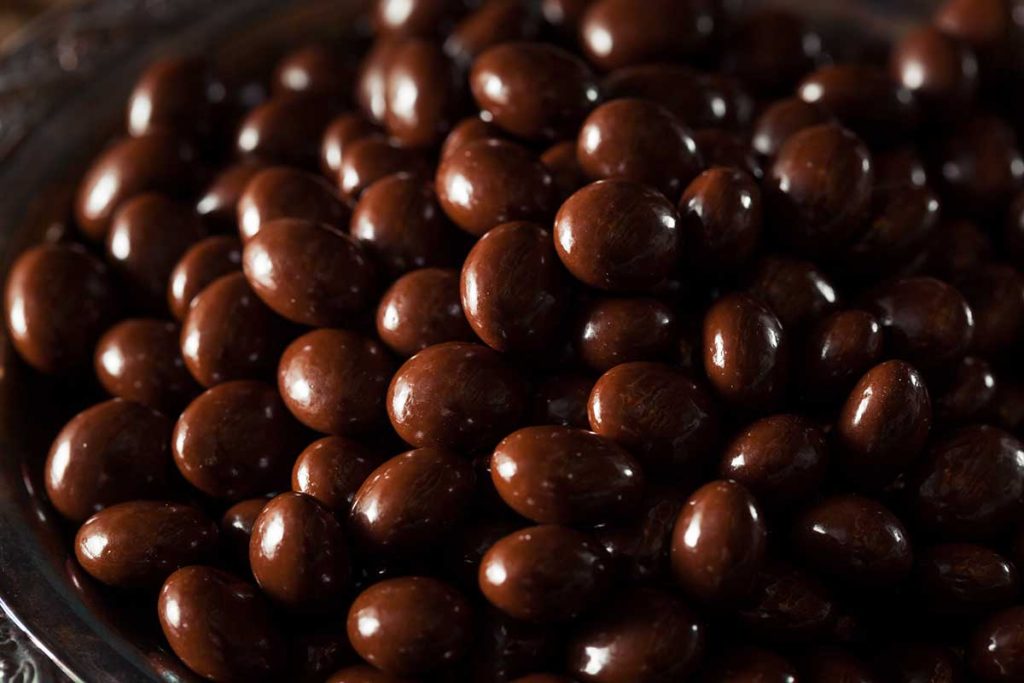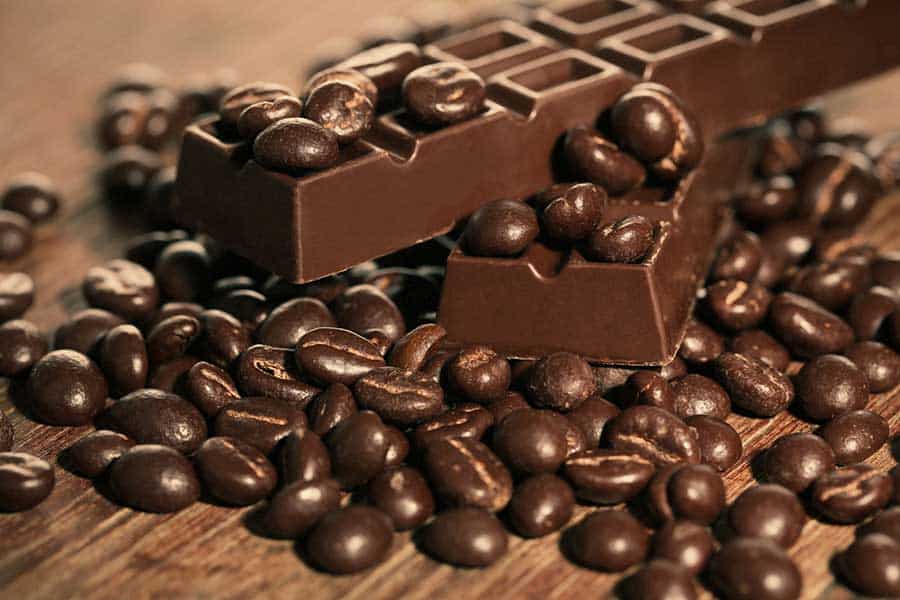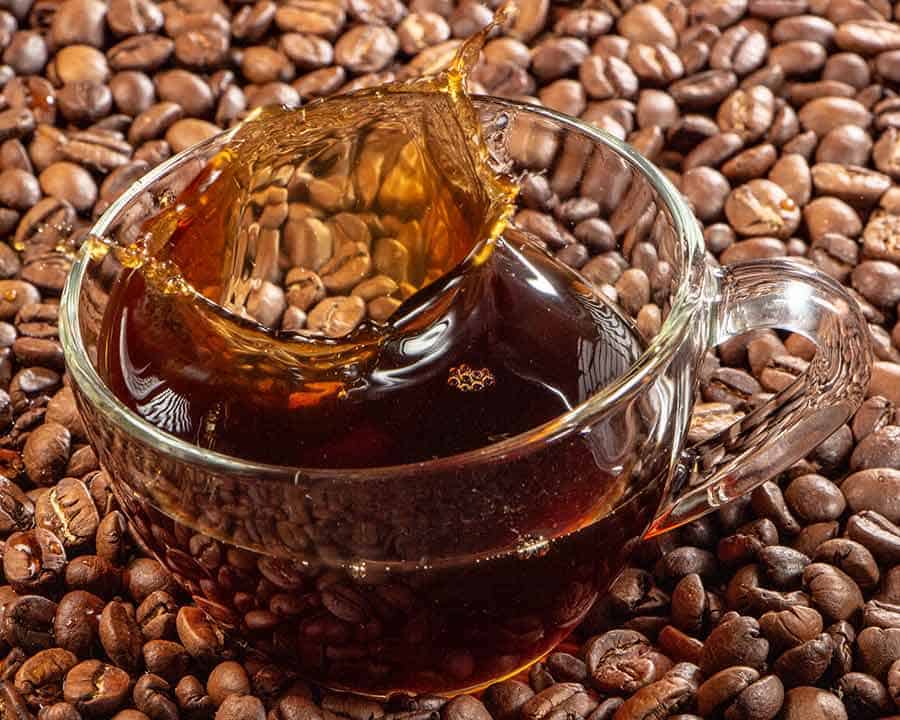How Much Caffeine Is in Chocolate-Covered Espresso Beans?

Coffee and chocolate! No other match comes close, not even the ones made in heaven! This combination has ruled the snack world, but there’s one little thing that probably bothers you about this euphoric combination — just how much caffeine is in chocolate-covered espresso beans?
Unfortunately, there’s no straightforward answer to that. It can be a lot, moderate, or a little, depending on a number of factors, like the type of espresso beans and the kind of chocolate used to cover them.
Now, caffeine is that delicate compound you don’t want to mess around with. But that doesn’t automatically mean it’s a dangerous thing. In fact, it has so many great health benefits you do not want to miss out on; it’s just that you have to be careful not to consume too much of it because the effects can be horrible.
Today, I will dive deeper to find out how much caffeine chocolate-covered espresso beans have in them. Spoiler alert: the findings were absolutely fascinating!
Join me as I take you through what I learned. To begin, let’s look at the two ingredients separately to find out the caffeine content of each.
Caffeine in Chocolate-Covered Espresso Beans: The Ingredients
Just as the name says, this snack blends two things: chocolate and espresso coffee beans. What you probably didn’t know is that each of these ingredients has a different amount of caffeine. Also, there are a couple of ways that you can tell the level of caffeine content in them. Read on to find out.
How Much Caffeine is in Chocolate?
Caffeine levels vary from one chocolate to the other. Here’s a little explanation to show you how this happens.
At some point during the production process, the cocoa beans will be turned into chocolate, and this will lead to the formation of two substances: cocoa solids and cocoa butter.
Caffeine is only present in cocoa solids. Cocoa butter has zero caffeine. Now, dark chocolate uses more cocoa solids than cocoa butter, meaning the caffeine content is higher compared to white chocolate which only uses cocoa butter.
The rule of thumb when it comes to caffeine levels in dark chocolate is that the more cocoa solids, the higher the caffeine levels. Here are some expert measurements by the United States Department of Agriculture (USDA) that will help you put that into perspective.
One ounce of dark chocolate with 70-85% of cocoa solids has about 22.7 milligrams of caffeine while a similar serving with 45-59% cocoa solids contains roughly 21.2 milligrams. White chocolate, as mentioned earlier, has zero milligrams of caffeine, but be warned that the amount of sugar and milk in it is relatively higher.
Caffeine in the Beans
Interesting question, right? My guess is you are probably wondering what makes espresso beans different from regular coffee beans, and do they have more caffeine? Even manufacturers brand them separately, but the truth is they are not completely different; it’s the roasting process that distinguishes the two.
Espresso beans are roasted for a longer time than regular coffee beans. That’s why most of them are either dark or medium roast.

Now back to the question of how much caffeine is in espresso beans. Well, because of the longer roasting process, the caffeine content is reduced. Shorter roast times usually result in more caffeine. What this means is that espresso beans have less caffeine content compared to regular coffee beans.
The type of bean used also has an effect on caffeine levels. Arabica coffee beans carry less caffeine content than Robusta. In fact, Robusta contains double the amount of caffeine found in Arabica.
Most manufacturers use Arabica beans when roasting and mixing beans for your espresso. Each contains about 6 milligrams of caffeine, meaning Robusta has 12 milligrams of caffeine.
Now that we know how much caffeine is in the two ingredients in this luscious treats, let’s find out the level of caffeine in chocolate-covered espresso beans.
How Much Caffeine Is in Chocolate-Covered Coffee Beans?
Since the snack combines coffee and chocolate, the caffeine content in it is a total of what’s contained in the two ingredients. Some snacks use dark chocolate, while others use white or milk chocolate, which carries about 9 milligrams of caffeine per 1.55 ounces.
A chocolate-covered espresso bean may have anywhere between 6-13 milligrams of caffeine. To know the exact amount of caffeine contained in your snack, take into consideration the following factors:
- Type of chocolate
- Thickness of the coating
- Roast level of the espresso beans
- Types of espresso beans (Arabica or Robusta)
Most manufacturers use Arabica beans not only because they have less caffeine content but also due to the lighter taste. A snack that combines Arabica espresso beans and milk chocolate will most definitely have less caffeine content than one that blends Arabica beans and dark chocolate or Robusta beans and dark chocolate.
Only a few of us have a solid grip on our cravings, so it would help you a lot if you go for a combination that is healthier, just in case you end up eating a lot of choco-coffee beans. The great news is you can always find whatever combination you are looking for. Check on Amazon or at your local store.
How to Eat Chocolate-Covered Espresso Beans
Chocolate-covered espresso beans can be classified as ready-to-eat snacks. As soon as you have your packet delivered or handed to you by a vendor, you can start devouring them.

You can get even more creative with your serving by sprinkling it on your chocolate ice cream or chocolate cake. This will, in fact, add more delectability to your other snacks, making them more sweet or attractive if you’re doing it for commercial purposes. It’s actually the trick to making the customer believe you’ve gone the extra mile for them.
However, be careful not to consume or use more than the recommended amount. For example, demolishing a whole packet or sprinkling all of it on your other snacks could interfere with your health. There’s a lot you could end up battling, such as a massive sugar spike, muscle twitching, trembling, and increased heartbeat.
In case you land yourself in any of these situations, halt your consumption, lie down, and take a rest until things go back to normal. And remember not to do that again!
FAQs
I believe you have a satisfactory answer to the age-old question of “Do chocolate-covered coffee beans have caffeine?” Now, let’s look at a few more questions that are frequently asked about this snack.
Are Chocolate-Covered Espresso Beans Good for You?
Forget the claims that chocolate-covered espresso beans are nothing but junk food. It’s simply not true.
Both coffee and chocolate are filled with antioxidants, which are substances that play a huge role in promoting our health. Antioxidants help in the neutralization of free radicals in our bodies. Left the way they are, these free radicals will damage your tissues, not only increasing your risk of diseases but also deteriorating your bodily function.
Other benefits this snack offers include elevating your mood and making you happier. However, this is only for a short period of time, so you should not completely rely on choco-coffee beans to make you happier.
According to studies, the caffeine content in this snack also has multiple health benefits, such as improving your blood pressure and heart rate. Just be careful not to overindulge because this will cancel out all those benefits.
Can You Make Coffee From Chocolate-Covered Espresso Beans?
Any coffee enthusiast will tell you that this is an absolutely terrible idea and here’s why.
The chocolate is going to melt slowly and possibly clog the filter. Also, it could overflow while still hot and stick itself all over your equipment. In other words, you will end up with a huge mess.
A trick most people use is placing the snack in hot water to make the chocolate melt off and leaving the espresso beans alone. I have to admit that’s a clever idea, but here’s the catch: The espresso beans may be a little bit too old to brew delicious coffee. They also weren’t roasted to make great coffee.
How Do I Make Chocolate-Covered Espresso Beans at Home?
You will be glad to know that this is one of the easier snacks to make. The recipe is simple. No technical process or hard-to-find ingredients are required; you only have to be careful and follow the right steps so as to end up with a delicious snack.
Check out our recipe for chocolate-covered coffee beans here.
Will Chocolate-Covered Espresso Beans Keep You Awake?
The answer is yes. By now, you already know that this snack has caffeine in it. To put this into perspective, a single serving of chocolate-covered coffee beans will have more caffeine than a single cup of coffee. So if you have a little bit too much of this snack, expect to stay awake. In fact, too much of this snack will make you not sleep at all.
But if you munch on them in moderation, the effect will be minimal. My recommendation is that you avoid or eat less of it at nighttime or before taking a nap.
How Much Caffeine Is in Chocolate-Covered Coffee Beans? A Summary
It’s clear that both coffee and chocolate pack caffeine content and none of it is lost when the two are combined to form a snack. How much of it is in your snack is going to depend on the type of chocolate, coffee bean variety, and the thickness of the coating.
Generally, the levels vary from moderate to high. A snack made of dark chocolate and Robusta coffee beans will have the highest amount of caffeine content while one that blends white chocolate and Arabica beans will have the lowest amount of caffeine.
When it comes to indulging, don’t overdo it, especially if the snack packs higher caffeine content. You will only be exposing yourself to serious diseases and health problems. That said, this is a delicious snack that, when consumed in moderation, can have great health benefits.
Owen is a writer and editor at Caffe Streets who considers himself a coffee fanatic. He spends his time researching and testing different coffee beans and brewing methods and sharing what he learns with others.





